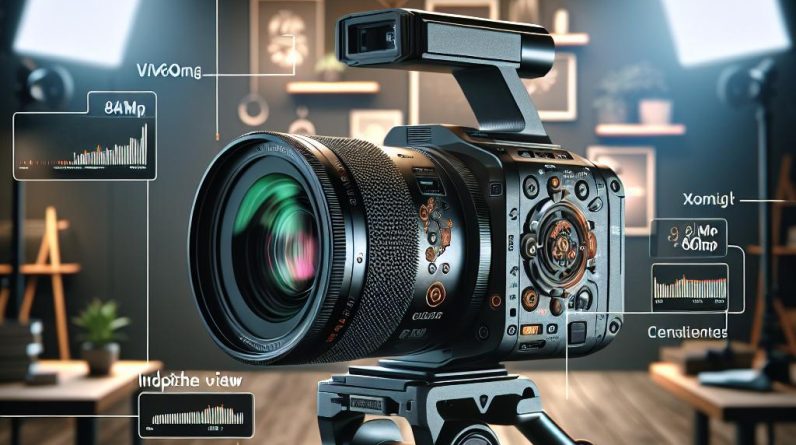Dive deep into the underwater world of mantis shrimp, the masters of color vision! With up to 16 different types of color receptors, these fascinating creatures can see a spectrum of colors beyond human comprehension. 🌊🔬 Discover how their incredible eyesight aids in hunting, communication, and even inspires cutting-edge technology! Join us on this visual journey and explore the mysteries of their vibrant underwater world! 🌍✨ #MantisShrimp #NatureDocumentary #MarineLife #VisualSuperpower
The Color Vision Superpower of Mantis Shrimp 🦐🌈
Understanding Mantis Shrimp Anatomy
mantis shrimp are unusual marine creatures known for their vibrant colors and remarkable vision. With around 16 photoreceptors compared to humans, who only have three, these crustaceans possess a visual system that is simply unmatched in the animal kingdom.
What Makes Their Eyes Unique?
- Compound Eyes: Mantis shrimp have large compound eyes that can move independently, akin to having mini binoculars.
- Color Spectrum: They can detect UV light, polarized light, and a broad range of colors that are invisible to humans.
- Triangular Vision: Each eye is divided into three parts, allowing them to perceive depth and distance more accurately than most animals.
The Science Behind Their Color Vision
The visual prowess of mantis shrimp comes from their complex retina,which is structured unlike any other species. their ability to see a wider range of colors is not just for show-it plays a significant role in their survival.
How Color perception Enhances Survival
Mantis shrimp utilize their enhanced color vision in several crucial ways:
- Predation: They can spot prey from great distances and discern colors that indicate health or edibility.
- Communication: Through vibrant body colors, they send signals to potential mates and rivals.
- Camouflage: Their ability to see varied shades allows them to hide from predators effectively.
Color Vision Mechanisms
The eyes of mantis shrimp contain a complex arrangement of photoreceptors and filters that allow them to see polarized light.This feature enhances their perception and lets them see contrasts not visible to human eyes.
Photoreceptors and Their Role
the numerous photoreceptors in mantis shrimp are categorized into different types:
| Photoreceptor Type | Function | Number in Eye |
|---|---|---|
| UV-sensitive | Detects ultraviolet light | Up to 4 |
| Green-sensitive | Detects green light | 2 |
| Blue-sensitive | Detects blue light | 3 |
| Red-sensitive | Detects red light | 1 |
Case Studies on Mantis Shrimp Vision
Research on mantis shrimp has uncovered interesting insights into their extraordinary vision:
Case Study: Depth Perception
Scientific studies utilizing video analysis revealed that mantis shrimp can gauge distance through the polarization of light, which is a crucial advantage during hunting.
Case Study: Communication Signals
In observations of mating behavior, researchers noted that specific color patterns can relay gender, health, and readiness to mate, all factors that contribute to accomplished reproduction.
Benefits of Mantis Shrimp Vision
Understanding the mantis shrimp’s color vision has implications beyond marine biology:
- Biomimicry: Engineers study their eyes for advancements in camera technology,optical devices,and robotics.
- Environmental Indicators: their reaction to color changes in their environment can signal changes in marine ecosystems, which can be critical for conservation efforts.
First-Hand Experiences with Mantis Shrimp
Many marine biologists and divers have had awe-inspiring encounters with mantis shrimp, frequently enough describing their colors and movements as mesmerizing. Here’s what they say:
“Seeing a mantis shrimp in its natural habitat was like witnessing a living rainbow! Their colors seemed to shift and reflect light in ways I had never seen before.” - Marine Biologist
“While diving, I noticed the mantis shrimp darting from cover to cover; their ability to blend in with the reef was remarkable. Observing them was a true honor.” – Environmental Scientist
Practical Tips for Observing Mantis Shrimp
If you’re interested in observing these colorful creatures, here are some tips:
- Find the Right Location: Mantis shrimp prefer coral reefs and tropical waters.
- Check Visibility: Clear water enhances their visibility; scuba diving or snorkeling during good weather increases chances of sighting.
- Use Polarized Sunglasses: These can definitely help reduce glare from the water surface,allowing you to see deeper underwater.
The Future of Mantis Shrimp Research
As research continues, scientists are focused on understanding how these remarkable animals use their vision in different environments and how it can be applied to technology and conservation.
the study of mantis shrimp color vision not only enriches our understanding of marine biology but also offers insights into the evolutionary advantages of visual diversity.






